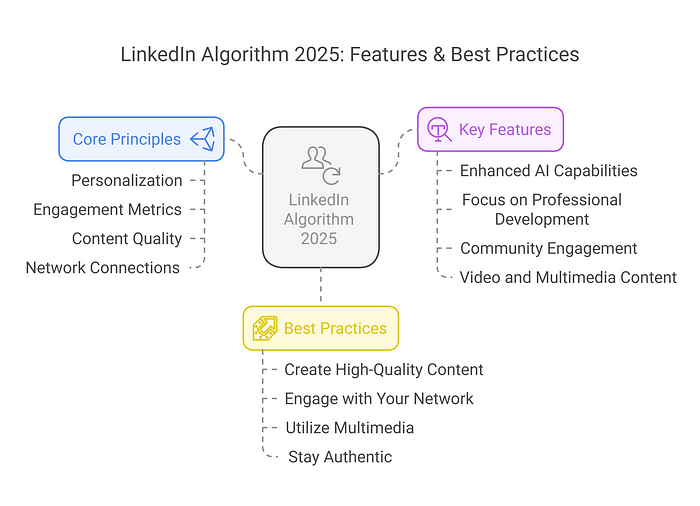In 2025, LinkedIn’s algorithm has undergone significant changes to enhance user experience and engagement on the platform. This document explores the key features and functionalities of the new algorithm, shedding light on how it prioritizes content, connects professionals, and fosters meaningful interactions within the LinkedIn community.
 |
Understanding the Algorithm’s Core Principles
The new LinkedIn algorithm is designed to prioritize relevance and authenticity in user feeds. It utilizes advanced machine learning techniques to analyze user behavior, preferences, and interactions. The core principles guiding the algorithm include:
- Personalization: The algorithm tailors content to individual users based on their interests, connections, and engagement history. This ensures that users see posts that are most relevant to them.
- Engagement Metrics: The algorithm places a strong emphasis on engagement metrics such as likes, comments, shares, and the time spent on posts. Content that generates higher engagement is more likely to be promoted in users’ feeds.
- Content Quality: High-quality content that provides value to users is prioritized. This includes informative articles, insightful posts, and engaging multimedia content. The algorithm assesses content quality through user feedback and interaction patterns.
- Network Connections: The strength of a user’s connections plays a crucial role in content visibility. Posts from first-degree connections or those with whom users frequently interact are more likely to appear in their feeds.
Key Features of the 2025 Algorithm
1. Enhanced AI Capabilities
The algorithm leverages advanced artificial intelligence to better understand user preferences and predict content that will resonate with them. This includes natural language processing to analyze the sentiment and context of posts.
2. Focus on Professional Development
In 2025, LinkedIn has shifted its focus towards professional development content. The algorithm promotes posts related to skill-building, industry trends, and career advice, encouraging users to engage with content that supports their professional growth.
3. Community Engagement
The algorithm encourages community engagement by promoting posts that spark discussions and foster connections among users. This includes highlighting comments and interactions that contribute to meaningful conversations.
4. Video and Multimedia Content
With the rise of video content, the algorithm gives preference to engaging video posts and multimedia presentations. Users are more likely to see content that includes videos, infographics, or interactive elements.
Best Practices for Users
To maximize visibility and engagement on LinkedIn in 2025, users should consider the following best practices:
- Create High-Quality Content: Focus on producing valuable and informative content that resonates with your audience.
- Engage with Your Network: Actively comment on and share posts from your connections to strengthen your network and increase your visibility.
- Utilize Multimedia: Incorporate videos and images into your posts to capture attention and enhance engagement.
- Stay Authentic: Share personal experiences and insights to foster genuine connections and build trust within your network.
Conclusion
The new LinkedIn algorithm in 2025 represents a significant evolution in how content is curated and shared on the platform. By prioritizing personalization, engagement, and quality, LinkedIn aims to create a more meaningful and productive environment for professionals. Understanding these changes can help users navigate the platform effectively and leverage its potential for career growth and networking.

.png)
.jpg)


.jpg)
0 Comments